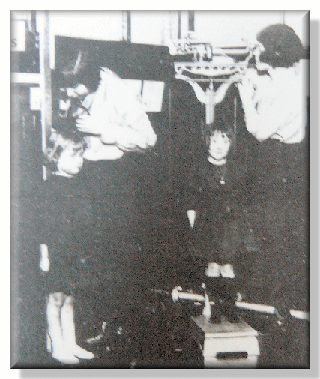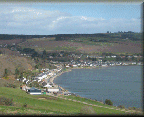There are few medical reports prior to 1920, but in 1914 a Government grant was made available to parents who could not afford treatment for their children and it was 1922 before nursing services started in schools. This meant a very occasional visit from the district nurse to examine children.
At this time there were 3 cases of cleft palates in the County and reported cases of rickets were confined mainly to children who had moved North from the South. Other notable points from the 1920s were – increase of defective speech, high rate of catarrh, chronic bronchitis which often merged into asthma and a suspicion of phthisis was advanced TB.
Now breathing and the use of handkerchiefs had to be taught, along with warning children of the dangers of spitting on floors.
Medical record cards for pupils were started and these went with children if they transferred to another school. A complete picture of the child’s health was thus built up.
In summer it was quite common for children to go barefoot, but in winter there were still several children with unsatisfactory footwear. Often clothing was insufficient, dirty or needing repair resulting in 8 cases being reported to the RSPCC.
Old backless desks were replaced thus improving children’s posture, and ash pits, which were considered a serious menace to health and a breeding ground for flies and diseases, were sited further from the school buildings.

The 1950s was the period which probably saw the greatest changes and advances in school health. In 1950 the campaign against tuberculosis was started but during the year tonsillectomy operations had to be suspended during the summer and autumn due to an outbreak of anterior poliomyelitis in the county. By 1952 the family doctor was being used more, with the result that fewer children required treatment in school. Head lice continued to make an appearance, though it was discovered that adults were the chronic offenders and were re-infecting the children!
By 1953/54, an Educational Psychologist for speech defects and Health Visitors had been appointed by the County. As well as these extra health specialists, pupils leaving school were offered the BCG vaccination against tuberculosis.
Great advances were made in 1955 when a concentrated campaign against diphtheria saw nearly all the children immunised and diphtheria disappeared from the area. X-rays and tuberculosis testing was carried out on school leavers. The BCG vaccination was offered to those 12 and over, with the result that 1070 children were vaccinated.
Other advances during that period included a hearing test for those aged 7 years, orthodontic treatment, and vaccination of pre-school children against diphtheria and whooping cough.
The anti-polio scheme arrived in 1956 when 969 received 2 injections and 1284 received one.
Towards the end of the 1950s there were mass X-ray units at the senior schools, with almost 100% of 12 plus year olds being x-rayed. 4581 children were vaccinated against polio, there was talk of medical rooms in schools and improvements were suggested for the care of maladjusted children. In 1960, audiometers were purchased so that the verbal hearing tests may be replaced. By this time GPs were carrying out many of the necessary vaccinations.
In 1941 there were 5421 pupils in the County including 615 evacuated children. The report states that the number of verminous heads were a disgrace to the County:
- 5 years – 25%
- 8 years – 40%
- 12 years – 26%
- Leavers – 34%
The number of pupils on the rolls in 1947 fell to 5153. The district nurse made monthly checks that clothing and footwear were adequate, but health-wise there were case of:
- Rickets – 15
- Scabies – 13
- Impetigo – 2
- Chronic bronchitis – 24 (mainly infant entrants)
1948 saw the start of the National Health Service, but the report for that year disclosed unhealthy gums, chronic catarrh and anaemia, all indicating a shortage of green vegetables and fruit in the diet. In one year there was also a 250% increase in inflammation of the cervical glands (throat)
